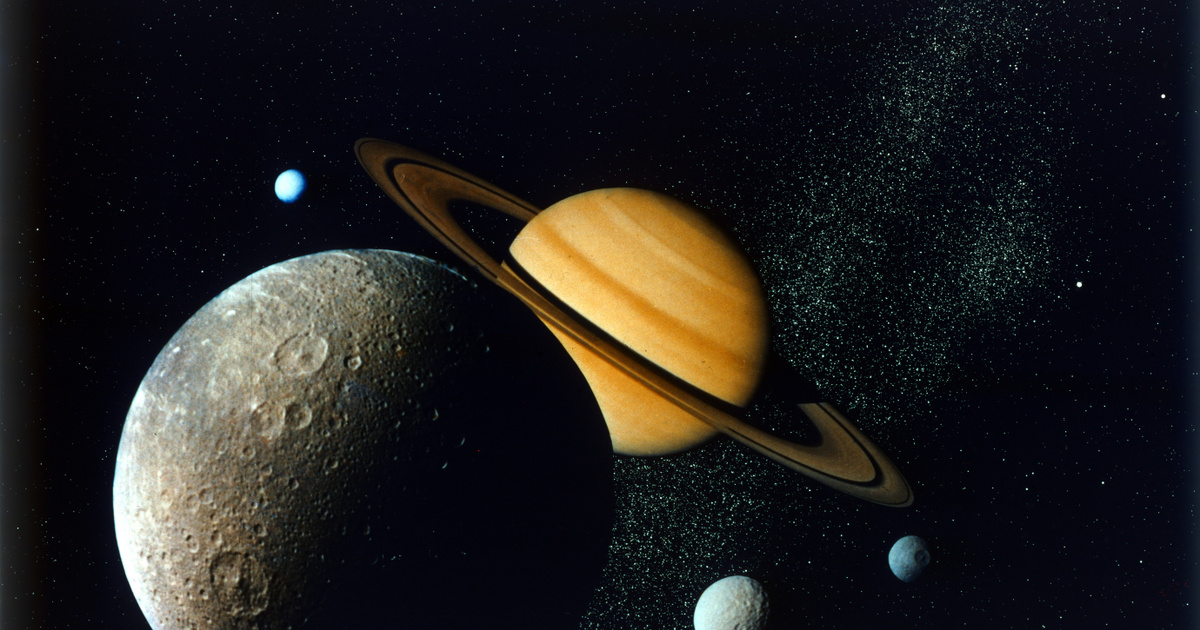The waning Moon and ringed Saturn will rise in close conjunction over the eastern horizon on July 24, just after 10 p.m. Intertwined, they will rise higher and higher in the sky,
At 10:25 p.m., the ringed planet will be visible just one lunar disk above the waning Moon.
Fortunately, despite the Moon's proximity, Saturn will also be visible in the sky with the naked eye.
The rising of the waning Moon is a special sight in itself, as the orange-red lunar disk is hidden by atmospheric refraction. Above it will shine Saturn's faint, star-like spotlight, shining with equal light. Later, at 23.25, the duo will be 10 degrees above the horizon, making them easier to observe. By this time, the apparent distance between the two objects will also be slightly greater: Saturn will be 43 arc minutes from the Moon, the Svábhegyi Star Observatory announced.
The second largest planet in our solar system, Saturn, the most spectacular part of the gas giant “ringed planet” is its vast ring system, located in the planet’s equatorial plane. During the planet’s 29-year orbital cycle, the northern hemisphere approaches the autumnal equinox, and will reach it in April 2025. At that time, the extremely thin ring system, only a few tens of meters thick, will be completely visible from its edge, and will almost disappear from our eyes.
If we could watch the moon rise,
The moon's orange color, distorted shape, and Saturn hovering above it can be the highlight of the evening moon.
The Svábhegy Star Observatory provides detailed reports on alignments and observations. on the side.














































